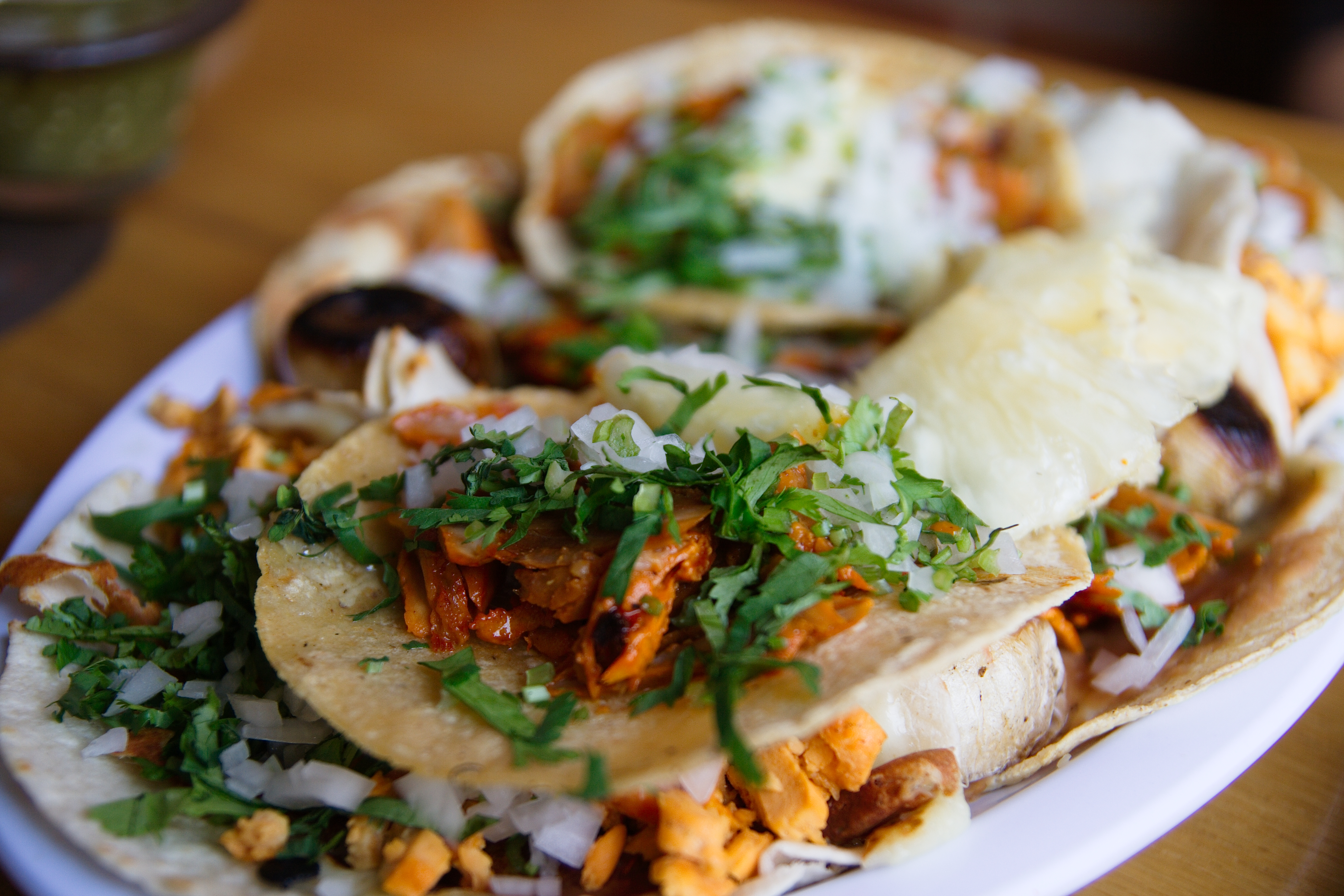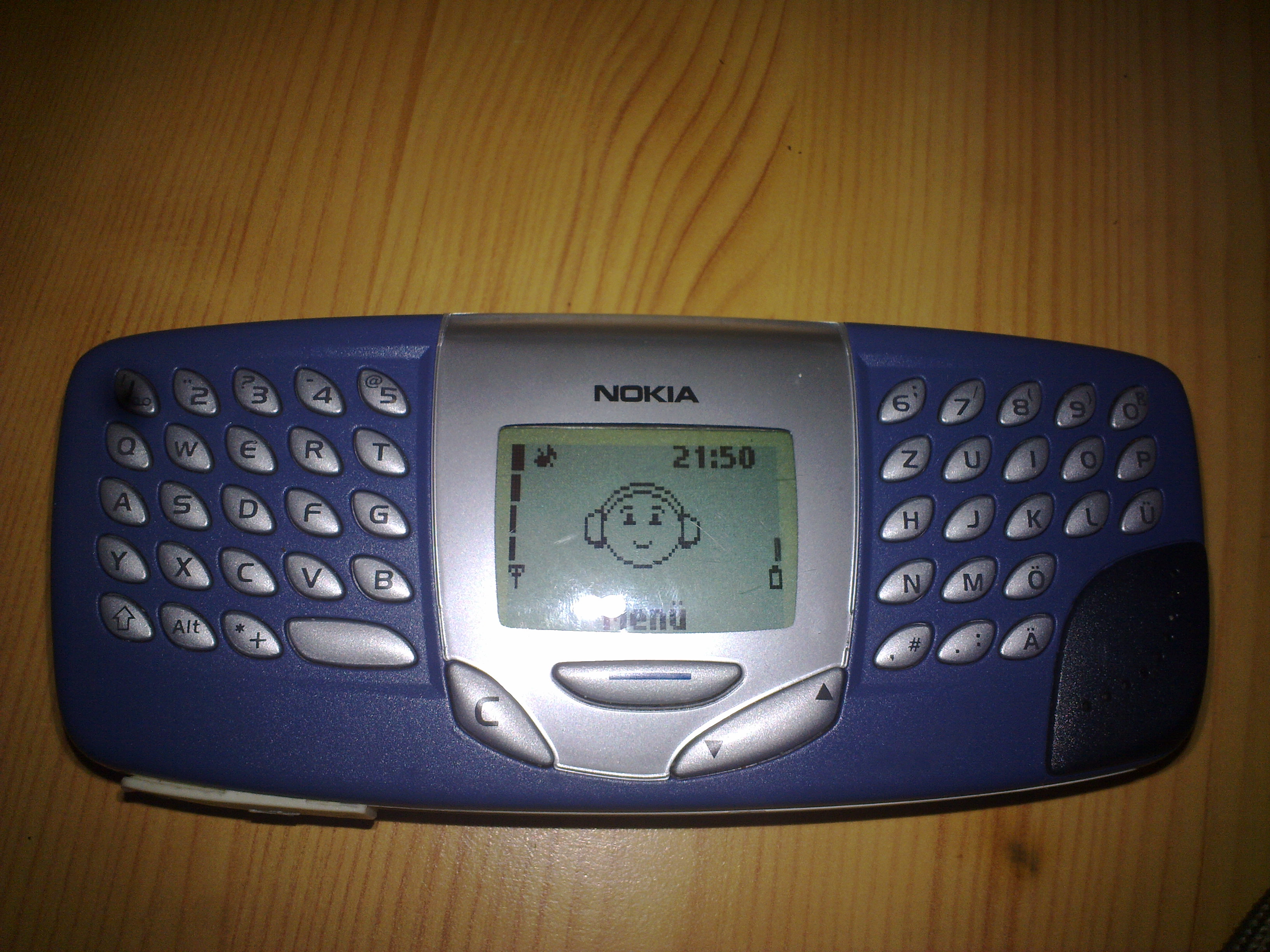|
Nokia N-Gage
The N-Gage is a smartphone combining features of a mobile phone and a handheld game system developed by Nokia, announced on 4 November 2002 and released on 7 October 2003. It runs the original Series 60 platform on Symbian OS v6.1. N-Gage attempted to lure gamers away from the Game Boy Advance by including telephone functionality. This was unsuccessful, partly because the buttons, designed for a telephone, were not well-suited for gaming. The original N-Gage was described as resembling a taco, which led to its mocking nickname "taco phone". Nokia introduced the N-Gage QD in 2004 as a redesign of the original "Classic" N-Gage, fixing widely criticized issues and design problems. However, the new model was unable to make an impact, and with only 2 million units sold in its two years, the N-Gage and its QD model were a commercial failure, unable to challenge their Nintendo rival. The N-Gage was discontinued in February 2006, with Nokia moving its gaming capabilities onto selecte ... [...More Info...] [...Related Items...] OR: [Wikipedia] [Google] [Baidu] |
Nokia
Nokia Corporation (natively Nokia Oyj, referred to as Nokia) is a Finnish multinational corporation, multinational telecommunications industry, telecommunications, technology company, information technology, and consumer electronics corporation, established in 1865. Nokia's main headquarters are in Espoo, Finland, in the greater Helsinki Greater Helsinki, metropolitan area, but the company's actual roots are in the Tampere region of Pirkanmaa.HS: Nokian juuret ovat Tammerkosken rannalla (in Finnish) In 2020, Nokia employed approximately 92,000 people across over 100 countries, did business in more than 130 countries, and reported annual revenues of around €23 billion. Nokia is a public limited company listed on the Helsinki Stock Exchange and New York Stock Exchange. [...More Info...] [...Related Items...] OR: [Wikipedia] [Google] [Baidu] |
Taco
A taco (, , ) is a traditional Mexican food consisting of a small hand-sized corn- or wheat-based tortilla topped with a filling. The tortilla is then folded around the filling and eaten by hand. A taco can be made with a variety of fillings, including beef, pork, chicken, seafood, beans, vegetables, and cheese, allowing for great versatility and variety. They are often garnished with various condiments, such as salsa, guacamole, or sour cream, and vegetables, such as lettuce, onion, tomatoes, and chiles. Tacos are a common form of antojitos, or Mexican street food, which have spread around the world. Tacos can be contrasted with similar foods such as burritos, which are often much larger and rolled rather than folded; taquitos, which are rolled and fried; or chalupas/ tostadas, in which the tortilla is fried before filling. Etymology The origins of the taco are not precisely known, and etymologies for the culinary usage of the word are generally theoretical. ''Taco'' in ... [...More Info...] [...Related Items...] OR: [Wikipedia] [Google] [Baidu] |
Nokia Series 60
The S60 Platform (formerly Series 60 User Interface) was a software platform for smartphones that runs on top of the Symbian operating system. It was created by Nokia based on the 'Pearl' user interface from Symbian Ltd. It was introduced at COMDEX in November 2001 and first shipped with the Nokia 7650 smartphone. The platform has since seen 5 updated editions. Series 60 was renamed to ''S60'' in November 2005. In 2008, the Symbian Foundation was formed to consolidate all the assets of different Symbian platforms (S60, UIQ, MOAP), making it open source. In 2009, based on the code base of S60, the first iteration of the platform since the creation of Symbian Foundation was launched as S60 5th Edition, or Symbian^1, on top of Symbian OS 9.4 as its base. Subsequent iterations were named Symbian^2 (Japanese market only) and Symbian^3. The S60 software was a multivendor standard for smartphones that supports application development in Java MIDP, C++, Python and Adobe Flash. ... [...More Info...] [...Related Items...] OR: [Wikipedia] [Google] [Baidu] |
Personal Digital Assistant
A personal digital assistant (PDA), also known as a handheld PC, is a variety mobile device which functions as a personal information manager. PDAs have been mostly displaced by the widespread adoption of highly capable smartphones, in particular those based on iOS and Android. A PDA has an electronic visual display. Most models also have audio capabilities, allowing usage as a portable media player, and also enabling many of them to be used as telephones. Nearly all modern PDAs can access the Internet, intranets or extranets via Wi-Fi or Wireless WANs, letting them include a web browser. Sometimes, instead of buttons, PDAs employ touchscreen technology. The first PDA, the Organiser, was released in 1984 by Psion, followed by Psion's Series 3, in 1991. The latter began to resemble the more familiar PDA style, including a full keyboard. The term ''PDA'' was first used on January 7, 1992 by Apple Inc. CEO John Sculley at the Consumer Electronics Show in Las Vegas, Nevad ... [...More Info...] [...Related Items...] OR: [Wikipedia] [Google] [Baidu] |
Internet
The Internet (or internet) is the global system of interconnected computer networks that uses the Internet protocol suite (TCP/IP) to communicate between networks and devices. It is a '' network of networks'' that consists of private, public, academic, business, and government networks of local to global scope, linked by a broad array of electronic, wireless, and optical networking technologies. The Internet carries a vast range of information resources and services, such as the inter-linked hypertext documents and applications of the World Wide Web (WWW), electronic mail, telephony, and file sharing. The origins of the Internet date back to the development of packet switching and research commissioned by the United States Department of Defense in the 1960s to enable time-sharing of computers. The primary precursor network, the ARPANET, initially served as a backbone for interconnection of regional academic and military networks in the 1970s to enable resource shari ... [...More Info...] [...Related Items...] OR: [Wikipedia] [Google] [Baidu] |
Multiplayer Video Game
A multiplayer video game is a video game in which more than one person can play in the same game environment at the same time, either locally on the same computing system (couch co-op), on different computing systems via a local area network, or via a wide area network, most commonly the Internet (e.g. ''World of Warcraft'', '' Call of Duty'', ''DayZ''). Multiplayer games usually require players to share a single game system or use networking technology to play together over a greater distance; players may compete against one or more human contestants, work cooperatively with a human partner to achieve a common goal, or supervise other players' activity. Due to multiplayer games allowing players to interact with other individuals, they provide an element of social communication absent from single-player games. History Non-networked Some of the earliest video games were two-player games, including early sports games (such as 1958's ''Tennis For Two'' and 1972's ''Pong''), ear ... [...More Info...] [...Related Items...] OR: [Wikipedia] [Google] [Baidu] |
Nokia 5510
The Nokia 5510 is a mobile phone announced on October 11, 2001 and released in December of that year. The Nokia 5510 features a full QWERTY keyboard, an 84 x 48 monochrome display, and is notable for its digital music player, the company's first mobile phone with music player capabilities. It has a 64 MB memory for storing audio files. Its successor is the Nokia 3300. Features The 5510 shared many of the features of the Nokia 3310 due to both phones sharing components with each other, such as a built-in calculator, stopwatch and a reminder function. It also includes the same five games that came with the Nokia 3330: '' Snake II'', ''Space Impact'', ''Bumper'', ''Bantumi'', and ''Pairs II''. However, the 5510 also had the ability to play digital music files transferred onto its 64 MB internal flash memory via USB encoded in LSE format via the included Nokia software (from either MP3 or WAV format); as well as being able to receive FM radio. Design Compared to other ... [...More Info...] [...Related Items...] OR: [Wikipedia] [Google] [Baidu] |
D-pad
A D-pad (short for directional pad or digital pad; officially referred to by Nintendo as a +Control Pad) is a flat, usually thumb-operated, often digital, four-way directional control with one button on each point, found on nearly all modern video game console gamepads, game controllers, on the remote control units of some television and DVD players, and smart phones. Like early video game joysticks, the vast majority of D-pads are digital; in other words, only the directions provided on the D-pad buttons can be used, with no intermediate values. However, combinations of two directions (up and left, for example) do provide diagonals and many modern D-pads can be used to provide eight-directional input if appropriate. Although D-pads offer less flexibility than analog sticks, they can easily be manipulated (requiring little movement of the thumb) with very high accuracy. They are also far less demanding in maintenance and do not protrude very far from the controller, making them ... [...More Info...] [...Related Items...] OR: [Wikipedia] [Google] [Baidu] |
Thin-film Transistor
A thin-film transistor (TFT) is a special type of field-effect transistor (FET) where the transistor is thin relative to the plane of the device. TFTs are grown on a supporting (but non-conducting) substrate. A common substrate is glass, because the traditional application of TFTs is in liquid-crystal displays (LCDs). This differs from the conventional bulk metal oxide field effect transistor ( MOSFET), where the semiconductor material typically ''is'' the substrate, such as a silicon wafer. Design and Manufacture TFTs can be fabricated with a wide variety of semiconductor materials. Because it is naturally abundant and well understood, amorphous or polycrystalline silicon was historically used as the semiconductor layer. However, because of the low mobility of amorphous silicon and the large device-to-device variations found in polycrystalline silicon, other materials have been studied for use in TFTs. These include cadmium selenide, metal oxides such as indium gallium zin ... [...More Info...] [...Related Items...] OR: [Wikipedia] [Google] [Baidu] |
N-Gage (service)
The N-Gage service (also referred to as N-Gage 2.0) was a mobile gaming platform from Nokia that was available for several Nokia smartphones running on S60 ( Symbian). N-Gage provided numerous games with 3D graphics into an application featuring online (via N-Gage Arena) and social features. It takes its name from the original 2003 N-Gage gaming device, which it succeeded. The N-Gage platform was compatible with: Nokia N78, N79, N81, N81 8GB, N82, N85, N86, N86 8MP, N95, N95 8GB, N96, N97, Nokia 5320 XpressMusic, 5630 XpressMusic, 5730 XpressMusic Nokia 6210 Navigator, 6710 Navigator, 6720 Classic, E52, E55 and E75. Due to memory issues, hinted in an interview in February 2008, support for the Nokia N73, N93 and N93i was cancelled. After less than two years on 30 October 2009, Nokia announced that no new N-Gage games would be produced. Some reasons cited for its failure are its bad development model, marketing, and success of Apple's App Store. A tota ... [...More Info...] [...Related Items...] OR: [Wikipedia] [Google] [Baidu] |
Nintendo
is a Japanese Multinational corporation, multinational video game company headquartered in Kyoto, Japan. It develops video games and video game consoles. Nintendo was founded in 1889 as by craftsman Fusajiro Yamauchi and originally produced handmade playing cards. After venturing into various lines of business during the 1960s and acquiring a legal status as a public company, Nintendo distributed its first console, the Color TV-Game, in 1977. It gained international recognition with the release of ''Donkey Kong (video game), Donkey Kong'' in 1981 and the Nintendo Entertainment System and ''Super Mario Bros.'' in 1985. Since then, Nintendo has produced some of the most successful consoles in the video game industry, such as the Game Boy, the Super Nintendo Entertainment System, the Nintendo DS, the Wii, and the Nintendo Switch, Switch. It has created numerous major franchises, including ''Mario (franchise), Mario'', ''Donkey Kong'', ''The Legend of Zelda'', ''Pokémon'', '' ... [...More Info...] [...Related Items...] OR: [Wikipedia] [Google] [Baidu] |


_-_Computer_History_Museum.jpg)


